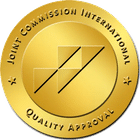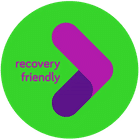IS DRUG ADDICTION A DISEASE
Is Drug Addiction Really A Disease?
Is having an addiction problem or struggling with alcoholism a choice or a disease? This has been an ongoing debate in society, which slows down progress in the medical treatment of addiction. At GateHouse Treatment, we strongly believe in 3 things:
- The stigma of addiction is associated with misconceptions behind why people suffer from chemical dependency issues.
- Instead of battling opinions and ideas between differing beliefs, today we have the medical technology and research capacity to reach far more educated conclusions about addiction.
- Addiction is accepted as the disease in the DSMV, a manual which describes disorders and conditions for diagnostic purposes.
Advances in neuroscience and imaging technology have allowed the American Medical Association and the American Society of Addiction Medicine to classify addiction as a chronic, often relapsing brain disease that causes compulsive use of mind or mood-altering substances, despite harmful consequences to the suffering individual and to those around.
Defining Addiction
Is having an addiction problem or struggling with alcoholism a choice or a disease? This has been an ongoing debate in society, which slows down progress in the medical treatment of addiction. At GateHouse Treatment, we strongly believe in 3 things:
- The stigma of addiction is associated with misconceptions behind why people suffer from chemical dependency issues.
- Instead of battling opinions and ideas between differing beliefs, today we have the medical technology and research capacity to reach far more educated conclusions about addiction.
- Addiction is accepted as the disease in the DSMV, a manual which describes disorders and conditions for diagnostic purposes.
Advances in neuroscience and imaging technology have allowed the American Medical Association and the American Society of Addiction Medicine to classify addiction as a chronic, often relapsing brain disease that causes compulsive use of mind or mood-altering substances, despite harmful consequences to the suffering individual and to those around.
History of The Disease Model
Dr. Benjamin Rush was the first to introduce the idea of the disease model back in 1784. The concept did not gain much traction until much later when Alcoholic Anonymous was founded in the 1930’s. Today, even though most medical professionals agree it’s a disease and there is an entire industry centered in its treatment, society has only begun making progress around the stigma of addiction. Alcoholics Anonymous when established in 1935, became the dominant treatment model for addiction. In Step One of AA, it states that the alcoholic is powerless over alcohol, and as a result, their life comes unmanageable. Also in the Alcoholics Anonymous Big Book is the Doctor’s Opinion-which introduced the idea of addiction as being a disease to society at large.
Isn’t Addiction a Choice?
While taking that first drink or drug maybe a choice, what ensues is an altered state of the brain which takes away the ability to choose to continue using or stop. This fact is evidenced by the addict or alcoholic continuing to use regardless of the consequences being faced. At which point, it becomes a brain disease. Many compare this to smoking cigarettes for years, and developing lung cancer as a result. People don’t question lung cancer or the necessity of treatment. Similarly, a person who kept a diet high in sugar develops diabetes as a result. Treatment is still necessary, or this person could have fatal consequences.
Brain Physiology of Addiction
The dopamine theory of addiction shows that many different substances have different chemical effects on the brain, but still share certain characteristics that are consistent. These include both hereditary and physical characteristics as well as a number of compulsive or addictive behaviors. Hereditary genetic traits were the first to be identified as one of the factors to make an individual more susceptible to developing a chemical dependency after exposure to a rewarding stimulus such as alcohol and drugs. Secondly, repeated exposure to the rewarding stimuli result in physical changes that strengthen dependence by deteriorating brain functions that control self-regulation and the desire to remain abstinent, even when facing dire consequences. These reward stimuli are the neurotransmitters known as dopamine, getting released by chemical substances in the brain, more commonly known as the “high.” Scientists have been able to identify specific dopamine receptors, known as “D2 receptors,” in the brain that are responsible for the motivation of individuals to forgo instant gratification and rather work towards a larger goal or reward. When these D2 receptors have a lower activity as a result of substances in the brain, we see an increase of impulsive behaviors in the individual. The person is seeking short-term and instant gratification. When there is an extended use of drugs and alcohol, these D2 receptors are continuously eroded, forcing the brain to regulate dopamine levels. This explains the need for more and more as an addict continues to use in order to feel the “high.” As these receptors continue to deteriorate, it makes the affected individual more impulsive and thus more likely to continue using regardless of harmful consequences. The availability of these D2 receptors also determine an individual’s pre-disposition. Some naturally have fewer D2 receptors, making them more vulnerable to addiction. Those who have higher D2 receptor availability have shown to be much more successful in drug and alcohol rehab treatments.
Treatment of Addiction at GateHouse
The only solution and treatment to the disease of addiction is total abstinence from all addictive substances. Since addiction is a chronic, progressive, and sometimes fatal disease, treatment is necessary. Relapse plays a big role in addiction, proving sobriety is difficult to maintain. This is where alcohol treatment centers, drug rehabs, and 12 Step programs come in as vehicles to help reduce that rate of relapse by identifying intrinsic character traits as well as environmental issues that could contribute to relapse while finding suitable solutions. The disease model considers addiction as a progressive disease that is irreversible even once achieving total abstinence from drugs and alcohol. Once past traumas, family influences, and other prolonged issues are dealt with in an alcohol and drug rehab facility, daily repetitive treatment is required to keep from relapsing. GateHouse Treatment, an alcohol and drug treatment center with sober living in New Hampshire, offers trauma relief, one-on-one counseling to address behaviors and fears the individual might exhibit. GateHouse Treatment allows our clients to rebuild a new life focused on sobriety and recovery with peer group support and help from expert professionals in the field. Here, clients find inspiration to dive into the recovery process and the hope they need to make sobriety a way of life. Please contact GateHouse Treatment today for yourself or a loved one seeking long term recovery from addiction. Call us at (855)-448-3588.




